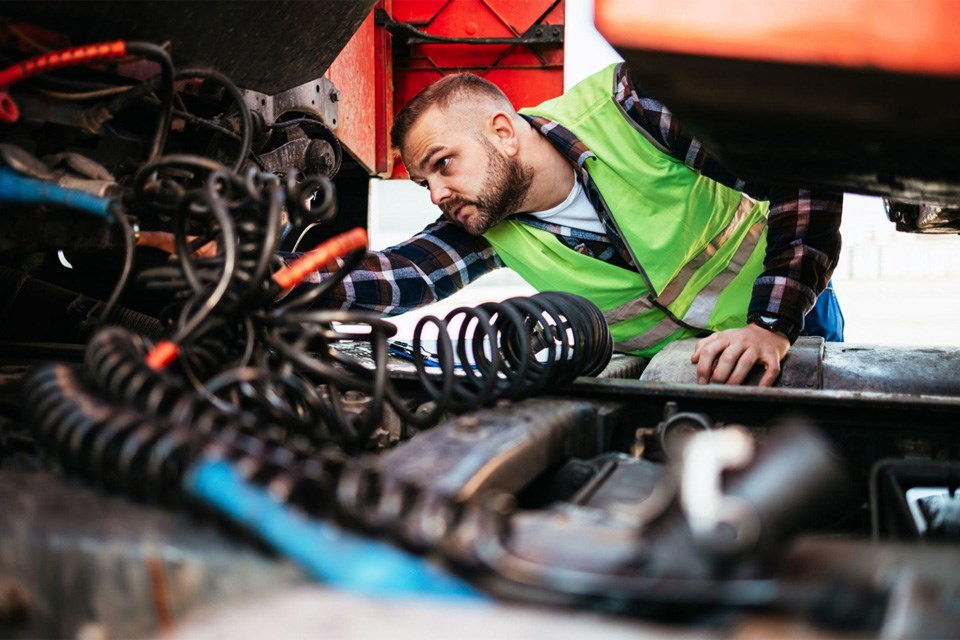Keep reading to see which car problems you may be able to handle at home and which may require a specialist.
Common Car Issues You Can Repair Yourself
If you know what you’re doing, DIY car repairs could save you big bucks. Here are a few common car issues that many can handle in their garage.
Flat Tire:
According to Active Tools, seven tire punctures occur every second in the United States alone. That’s approximately 220 million flat tires per year! What’s worse? On average, the everyday driver is estimated to have up to five flat tires in their lifetime.
Usually, the culprit is a nail or some other sharp object. While you can plug the tire, that’s just a temporary fix. Fortunately, changing a flat tire on your own is easy and cost-effective – it’ll save you from paying a tow truck and a visit to the repair shop. Just be sure to follow the instructions for jack placement in your owner’s manual and never go underneath a vehicle when it’s jacked.
Wiper Blades:
In general, you should replace wiper blades every 6-12 months. However, if you’re a frequent driver, you may need to replace them sooner. Decreased visibility and screechy chattering are two telltale signs that your wiper blades need to be replaced.
To replace the blade, simply slide the clip that attaches the blade to the wiper arm down and throw out the old blade. Then, install the new blade! It should click once it’s in place.
Dead Battery:
Several factors can affect the lifespan of your vehicle’s battery, from your location to a poor charging system to personal habits (i.e. listening to the radio or running in-vehicle entertainment with the engine off). When a battery is about to go, you may notice that the engine is turning over more slowly than usual or that the battery light is flickering on and off.
A battery is one of the most common reasons drivers call for help. The good news? Changing a battery is simple if you’re at home. If you find yourself stranded on the side of the road, you may need to call assistance. If you live in a rural area, keeping a jump pack in your vehicle is a good idea.
Headlight Bulbs:
When it comes to replacing your headlights, the most challenging part is choosing the correct bulb. Once you’ve got the bulb, all you have to do is check your owner’s manual for installation instructions. It should take about 30 minutes to replace the bulb, and it’ll save you money, too! You just need a four-in-one screwdriver, a wrench set, and a new bulb, of course.
If you have an older vehicle, you may be required to remove the entire headlight assembly from the vehicle before replacing the bulb. In this case, remove the headlight and the old bulb, install the new one, and then secure the headlight assembly back in place.
Car Problems That Require a Mechanic’s Help
While some vehicle issues are easy to fix, some solutions aren’t as cut-and-dry. Here are a few common problems no DIY mechanic should take on.
Overheating:
If your vehicle’s engine is overheating, you may notice steam coming from underneath the hood, that the temperature gauge is in the red zone, or that it points to the “H.” If this happens, turn off the air conditioner and turn on the heat. This will help pull heat away from the engine. Find a safe place to pull over and shut off the engine. Sit with your vehicle for 15-20 minutes and keep your eye on the temperature garage. While you wait, go ahead and call a friend or your local repair shop.
Note: Gauges vary depending on the type of vehicle you have; consult the manual if you’re unsure of what your vehicle is trying to tell you.
Transmission Repairs:
Transmission repairs may seem simple, but in reality, one tiny mistake could cause a number of expensive-to-fix problems. Tougher transmission problems also require special tools that many average mechanics don’t have. A couple of examples include transmission spring compressors and linkage removal tools. So, unless you’re a trained specialist, transmission issues should be left to the pros.
Mounting and Balancing Tires:
While changing a flat tire on your own is a quick and easy job, an auto repair shop should handle mounting and balancing tires. A job of this scope requires sophisticated tools (such as a calibrated spin balancer) that most at-home mechanics don’t have.
Bodywork:
Repairing a damaged body takes time, money, and patience. If your vehicle is damaged beyond a minor dent or chipped paint, you should seek the help of a professional. This is particularly true for collision repair jobs, as fixing a broken windshield can be dangerous for an amateur or DIY mechanic.
Ultimately, there are some minor vehicle repairs that you may be able to handle on your own, while others require a professional with the tools to do it properly. If you’re unsure, contact a reputable mechanic and ask!
 This story was made possible by our Community Partners Program. Thank you Davis Chevrolet for helping to expand local news coverage in Alberta. Learn more.
This story was made possible by our Community Partners Program. Thank you Davis Chevrolet for helping to expand local news coverage in Alberta. Learn more.


